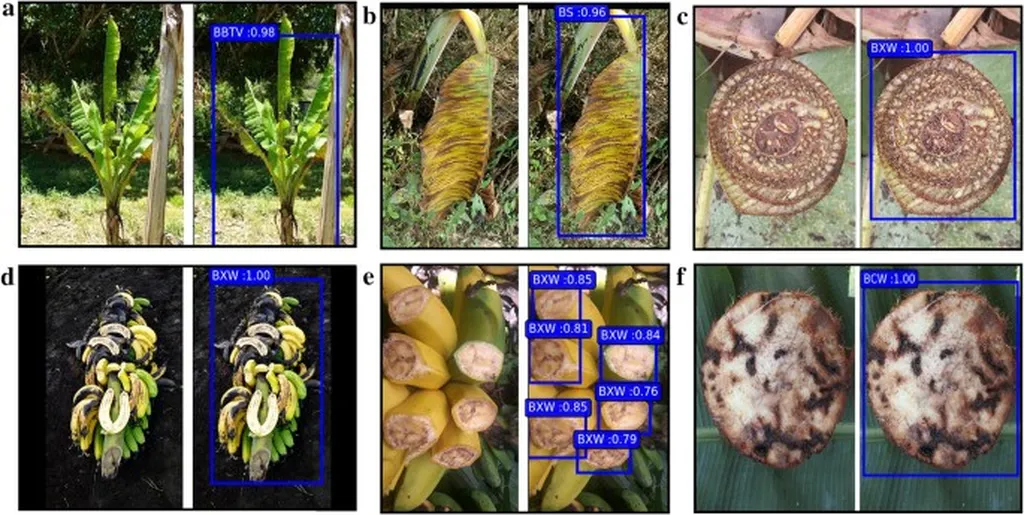In the heart of the tropics, banana production is under siege. Pests and diseases threaten yields, livelihoods, and food security, particularly for smallholder farmers. But a new wave of artificial intelligence (AI) applications is emerging to combat these challenges, offering precision and efficiency that traditional methods can’t match. A recent review published in *Discover Internet of Things* delves into the cutting-edge AI techniques transforming banana pest and disease management, with insights that could reshape the future of agriculture.
The study, led by Jhih-Rong Liao of the Taiwan Banana Research Institute, provides a comprehensive assessment of AI applications in banana health monitoring. Unlike previous reviews, it classifies model performance across different systems—mobile, UAV (unmanned aerial vehicles), and IoT (Internet of Things)—and evaluates their effectiveness under both controlled and field conditions. This nuanced approach offers a clearer picture of what works and where.
At the core of this revolution are deep learning models, including convolutional neural networks (CNNs), YOLO (You Only Look Once) variants, and Vision Transformers (ViTs). These models are trained to recognize patterns in images captured by drones, smartphones, or IoT sensors, identifying pests and diseases with remarkable accuracy. “The key advantage of these models is their ability to process vast amounts of data quickly and accurately,” Liao explains. “This speed and precision are crucial for early detection and intervention, which can significantly reduce crop losses.”
The review highlights recent advances, such as the Swin Transformer and lightweight ViT architectures, which are pushing the boundaries of what’s possible. These models are not only more accurate but also more adaptable, capable of functioning effectively in diverse environments. However, the journey isn’t without its hurdles. Data quality, model generalization, cost, and infrastructure remain significant barriers. “While the technology is promising, its success hinges on overcoming these challenges,” Liao notes. “We need robust data collection methods, better model training techniques, and improved infrastructure to support widespread adoption.”
The commercial implications of this research are substantial. For the agriculture sector, AI-driven pest and disease management could mean higher yields, reduced chemical use, and improved profitability. Farmers, especially smallholders, could benefit from early detection systems that minimize crop losses and maximize productivity. “This technology has the potential to level the playing field,” Liao says. “By providing smallholder farmers with the tools to monitor and manage pests and diseases effectively, we can enhance food security and improve livelihoods.”
Looking ahead, the review offers a structured roadmap for scalable and inclusive AI deployment. It emphasizes the need for collaboration between researchers, policymakers, and farmers to ensure that the technology is accessible and effective. “The future of banana production lies in harnessing the power of AI,” Liao concludes. “But it’s not just about the technology; it’s about creating an ecosystem that supports its adoption and use.”
As AI continues to evolve, its applications in agriculture will only expand. The insights from this review could shape future developments, guiding researchers and practitioners toward more effective and sustainable solutions. For the banana industry, and indeed for global agriculture, the future looks promising—driven by innovation, powered by data, and focused on impact.

